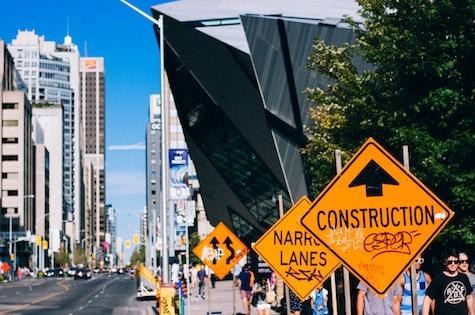We all look forward to “holiday time” as it is that chance to relax, enjoy & have recreational “time out” & fun together. No routines for a week or two & many a great memory is made from a family holiday!
Outside our home environment on “holidays” the roadway environment can look different to what children are used to seeing & they may not therefore, recognise them as a roadway.
For example: no line markings, narrow roadways with no curb or gutter present so that there is no physical demarcation or boundary between “danger” & “safety”. The roadway may seem quiet but default speeds are set at 50 or 60km/hr yet we often view “street play” in these areas, which may lead a younger child to think the roadway is in fact a safe playground. There is no such thing as a safe roadway. Road play is never ok.
Our Little Blue Dinosaur Campaign “It’s Holiday Time: Slow Down, Kids Around” is a campaign not just focused on drivers, children, parents & carers….. It is a campaign for our community to raise awareness & increase knowledge so that we can preserve children’s safety & in turn know happiness & joy in life especially at “holiday time”.
When we go to on holidays – whether it’s to coastal beaches, rural farmstays, other cities or overseas – it is incredibly important to start with a family conversation about the roadway environment and lay down some rules. After assessing the surrounding environment, we need to articulate how the roads look, and how we expect our children to use them. In coastal regions for example, there is often a lack of curb and guttering, cars parked on the verge and shrubbery blocking our view, so taking 10 minutes to explain where the road is and where our children can safely play, means that they are going to be less confused about where they’re allowed to go. In these regions we often have no choice but to use the road to get to the beach or park, so we need to talk about why in this environment we walk on the road but it isn’t something we do at home.
Children have physical, perceptual and cognitive limitations around roads.
Until age 10, they have:
- Limitation in their cognitive abilities to understand each element of the complex (and constantly changing) road environment
- Trouble determining the origin of sound when a car is approaching
- They take longer to react to sudden changes in the traffic environment
- Generally lack the height to fully assess the scene
- They are often absorbed in what the activities they are doing & whilst they might hear a message such as “stop!”, it will take their brain additional time to react. This could potentially place them in life threatening danger
- Children may falsely believe that a roadway that appears quiet is okay to play on
These factors (individually or in a combination) raise the risk of an accident occurring quite significantly. This is why we, along with road safety experts across the country, constantly stress that an adult should always accompany and actively supervise children until 8 when they’re anywhere near a road.
Ensure they hold onto your pram, stroller, bag, trolley or a piece of your clothing if your hands are full.
After the age of 10, children are more confident and consistent within the traffic environment however they should be closely supervised until at least 12 years old. This is an important stage in their development as they are exposed to roadways and continue to build confidence around roadways.
Talking to our children about road safety is one step, but modelling safe roadway behaviour is equally as important. Our children are watching us every day to learn about what is acceptable roadway behaviour. Consciously or sub-consciously, our children are refining the way they behave around roads, so we must lead by example every time we are using a road. We should also be using these precious opportunities to point out unsafe roadway behaviours we see and discuss why it’s not acceptable to repeat the dangerous things we sometimes/often see.
We should talk about what different road signs mean, identify safe places to cross together and reinforce the STOP, LOOK, LISTEN, THINK procedure.
Road safety should be a daily conversation as our children are exposed to the danger of roadways, driveways and vehicles daily.
Teaching our children today about putting away our phone away when we go near a road as well as taking our headphones out of our ears and focusing on what is in front of us.








 Agree (0)
Agree (0) Disagree (
Disagree (









__small.png)










